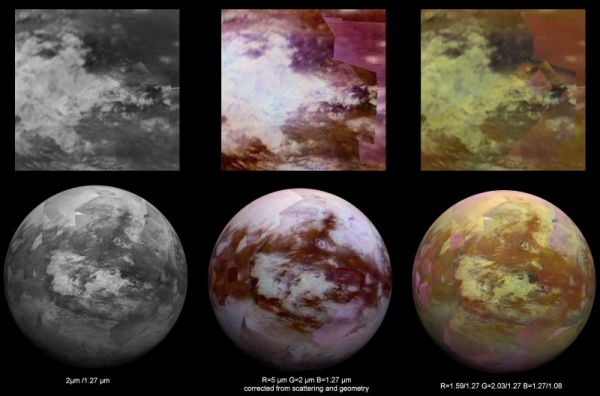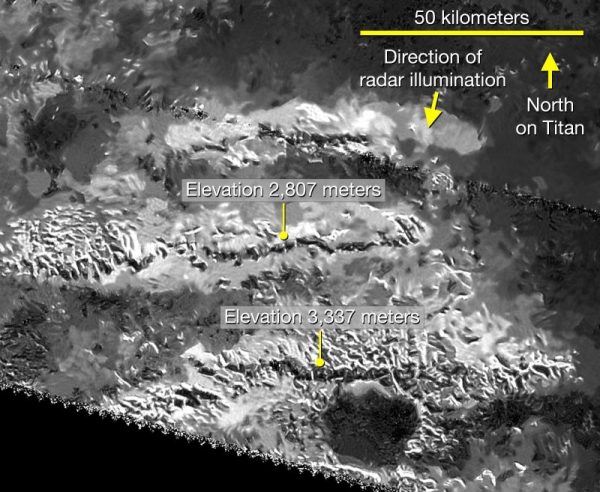ILYA HEL

If — and when — the industry of space tourism will take off, the moon of Saturn the Titan will be one of the first destinations. Especially after the gorgeous photographs submitted by team Cassini last week. Several new infrared compositions of the icy moon allows us to look under her suffocating haze. And if you squint you can see something amazing on the surface.
Near the equator of Titan towers a gigantic mountain of ice with a height of 3337 meters. The mountain is among the three peaks, known as mount Mithrim, and was discovered by the radar instrument probe “Cassini”, which measures topographic change of the reflected from the moon’s surface radio waves. They talk about that dynamic geological processes constantly change the surface of Titan.
“It is not only the highest point we have found on Titan, but, most likely, had to find it,” said Stephen wall from the jet propulsion Laboratory of NASA. Wall and his colleagues talked about higher sights Titanium at a scientific conference devoted to lunar and planetary science held in Texas last week.

For over ten years, the probe “Cassini sails of the ring system of Saturn, taking pictures and collecting data about the gas giant and its dozens of moons. The largest of these moons, Titan, is one of the strangest places in our Solar system. Because there is damn cold, you might think that Titan is a dead wasteland. But in fact Titanium is covered with a frothy oceans and flowing rivers. Thick cloud atmosphere sheds the rains methane on the surface, vitcheva ridges and plains. And with mountain ranges that could compete with the earth, tectonic activity on Titan is very powerful.
Numerous flybys Cassini has allowed us to piece together a global picture of the moon. And it wasn’t easy. Due to dense clouds, the only way to visualize the surface is to represent it in the infrared spectrum. The image on top represent the culmination of the data collection for 11 years, carried out a visual and infrared spectrometer Cassini from 2004 to 2015. Making a map of the moon at several different wavelengths, it is easier to see the strange and mysterious surface features of the satellite.
And while we have already discovered so many interesting places that I am even now ready to take a rocket and fly.







